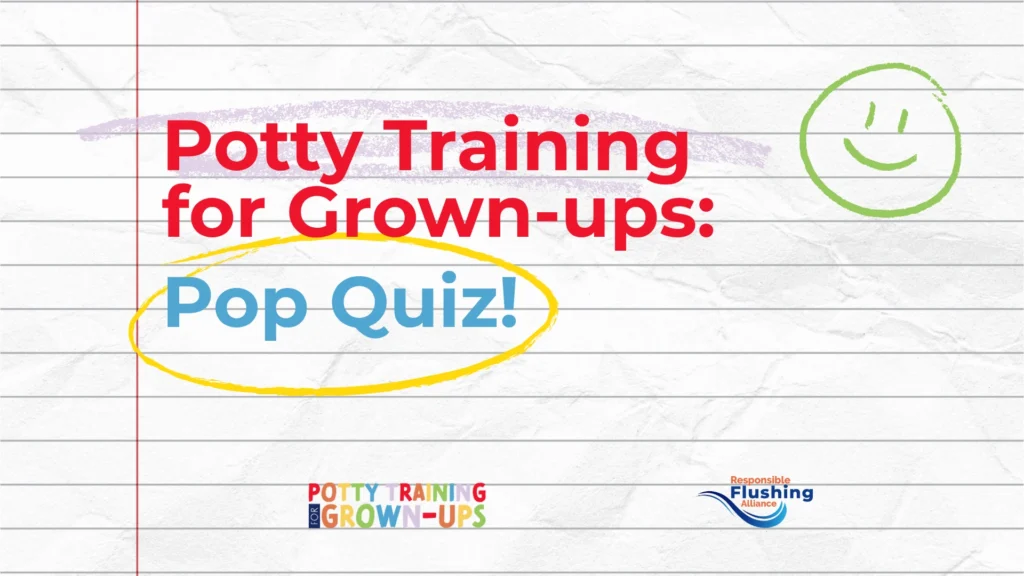School’s back in session, but not just for kids. For parents, too!
Like learning your ABCs or times tables, knowing the Do’s and Don’ts of responsible flushing is an important part of a well-rounded education (and healthy home plumbing).
Did you know that 99% of materials that cause clogs at wastewater treatment plants are items that never should have been flushed in the first place?
And people with children in the household are more likely to flush non-flushable items down the toilet than those without.
That’s why it’s imperative that grown-ups go revisit the basics with Flushing 101 this back-to-school season.
When we flush things we shouldn’t, it doesn’t just damage the pipes. It also creates blockages that can cause the release of raw sewage into our streets, drains, and even homes. This can expose our families and environment to harmful substances, including bacteria, viruses and parasites.
And even if non-flushable items do make their way out of our homes and neighborhoods to wastewater treatment plants, they can end up caught in intake pumps, straining systems and lead to expensive repairs. When this happens, infrastructure can’t run efficiently to protect the health of our communities and environment.
But have no fear — knowledge is power! By educating yourself on responsible flushing habits, you can help protect your home and family from the consequences of improper flushing.
It’s time for a pop quiz!
Are you ready to Flush Smart this school year?
Question #1: Before flushing a wipe down the toilet, what symbol should you look for on its packaging?
A.) A thumbs up
B.) The Do Not Flush symbol
C.) The brand logo
Answer: B! Anytime you see the Do Not Flush symbol on a product’s packaging, it means it is not designed for the toilet and should be disposed of in a trash can. Wipes labeled Do Not Flush — such as baby wipes, makeup wipes, and common household cleaning wipes — make up 34.1% of material pulled from pipes at wastewater treatment plants.
Question #2: True or False: It’s never okay to flush any wipes down the toilet.
A.) True
B.) False
Answer: B! While Do Not Flush wipes are made of long, durable, fibers that don’t break down in water, flushable wipes are made of short, plant-based fibers designed specifically to break down and disperse easily in water similar to toilet paper. When in doubt, check the product packaging for the Do Not Flush symbol and disposal instructions.
Question #3: Which items are generally considered safe to flush down the toilet?
A.) Paper towels, cotton balls, and hair
B.) Fats, oils, and grease
C.) Human waste, toilet paper, and flushable wipes
D.) Food scraps, tampons, and tissues
Answer: C! Human waste, toilet paper, and flushable wipes are the only things you should be flushing down your toilet. All other items should be disposed of properly in a trash can; otherwise, you may end up stuck with the bill for plumbing repairs.
Don’t think you passed the quiz? Don’t worry, that’s why we’re here.
As part of our Potty Training for Grown-Ups campaign, we partnered with some popular online creators to help parents learn the facts of responsible flushing with family-friendly skits, fun jingles, and songs that’ll make you want to move your feet and flush responsibly!
This back-to-school season, let’s all commit to being A+ students of responsible flushing. It’s a simple habit with monumental impact — keeping our homes flowing smoothly, our communities healthy and our planet cleaner.
